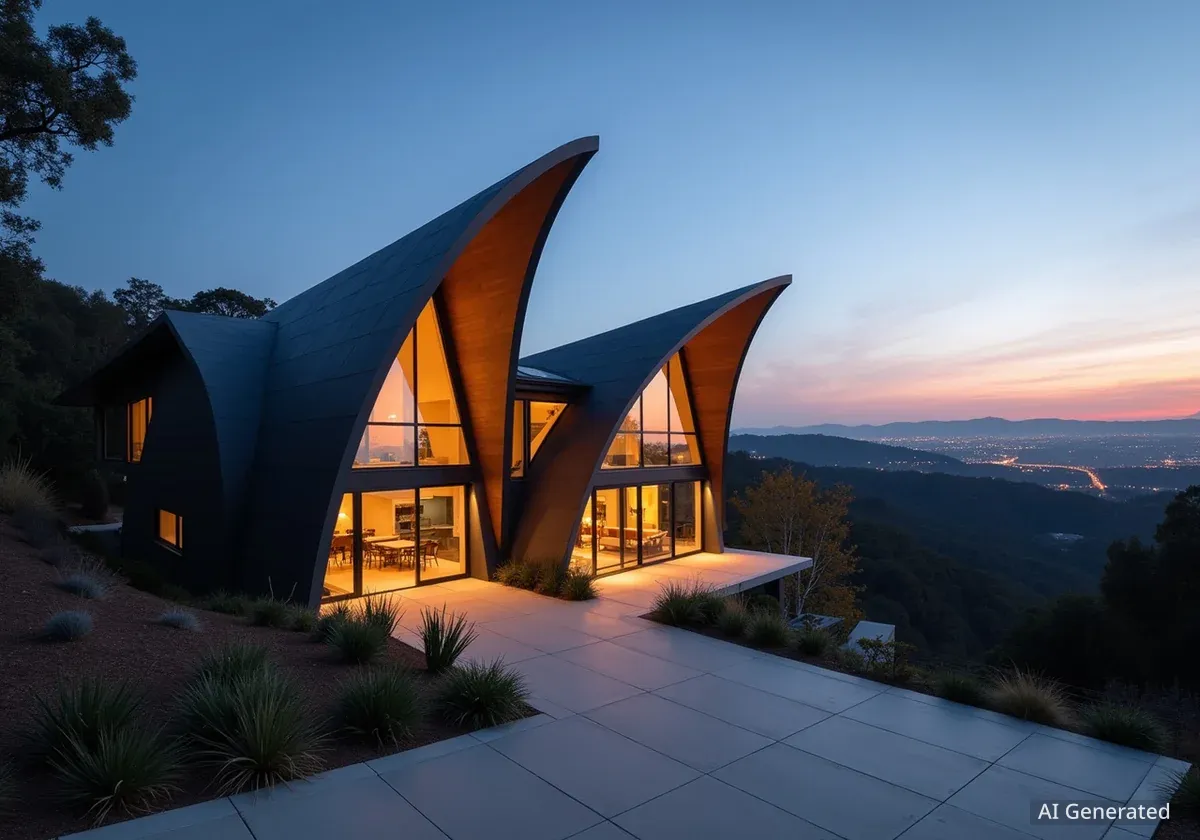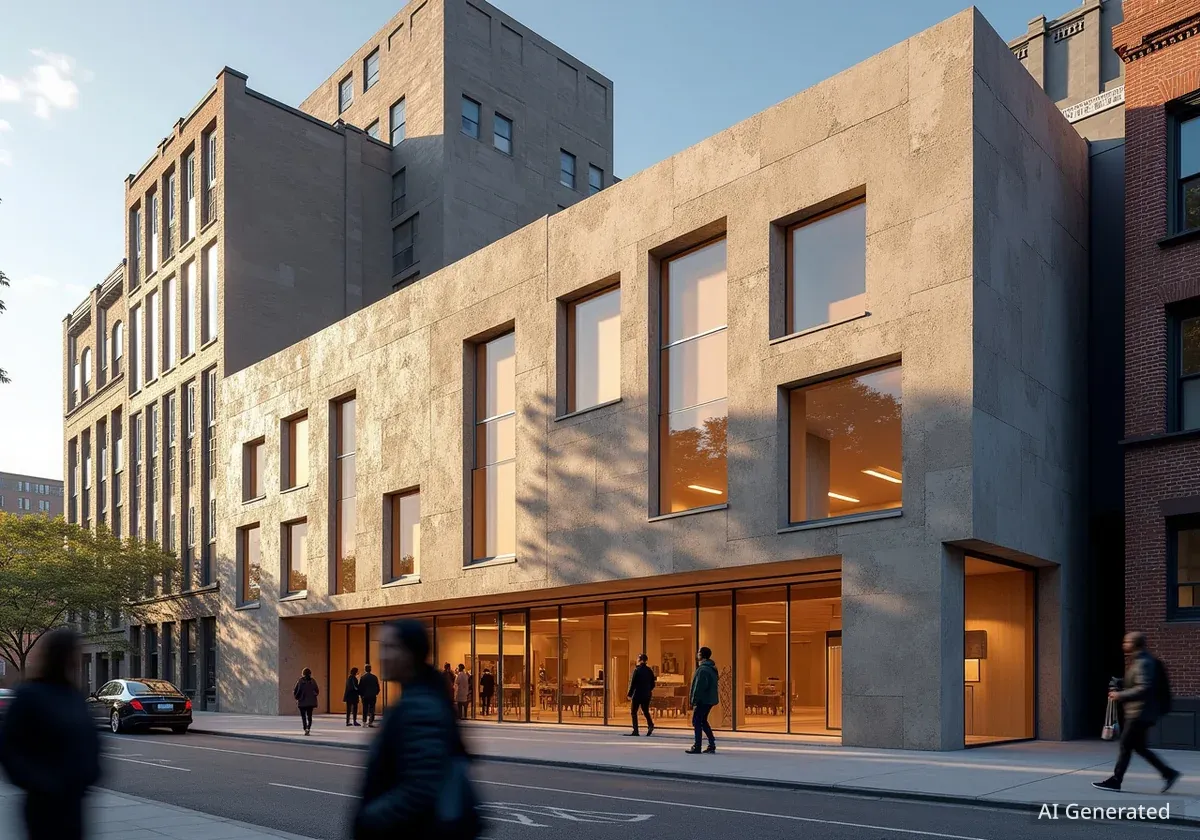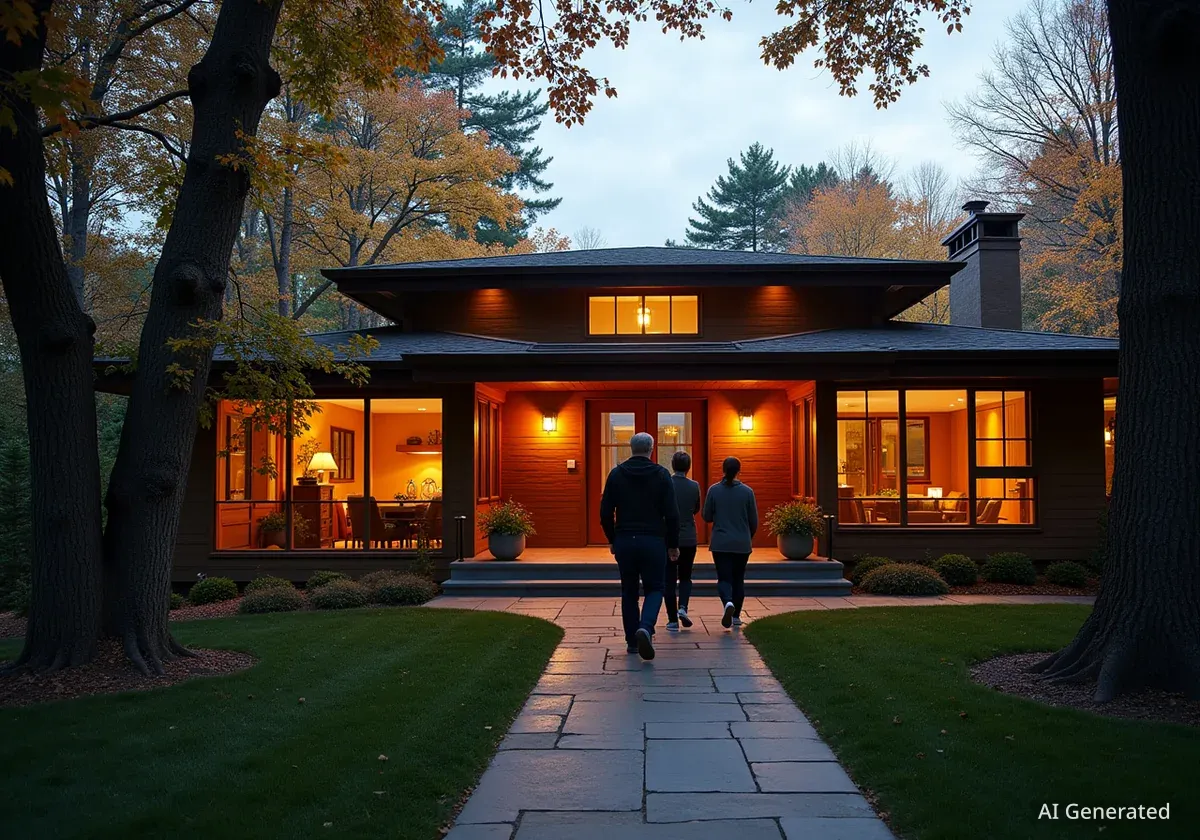The architecture firm WOJR has completed the House of Horns, a unique 8,500-square-foot residence in California's Los Altos Hills. This innovative home, finished in 2024, is designed to capture natural light and frame specific views of the Silicon Valley landscape. Its design incorporates an existing foundation from a previously planned Spanish-style property, creating a new architectural identity.
Key Takeaways
- The House of Horns, designed by WOJR, is an 8,500-square-foot residence in Los Altos Hills.
- Completed in 2024, its design focuses on capturing changing light and views of Silicon Valley.
- The home features distinctive 'horn' volumes that create double-height, glass-fronted spaces.
- It integrates an existing foundation, blending new architectural principles with prior conditions.
- The structure has two distinct levels: a bright upper floor and a subterranean concrete lower level.
- Materials include blackened wood, dark metal, Danby marble, and terrazzo flooring.
Innovative Design Embraces Landscape and Light
The House of Horns stands in the foothills of the Santa Cruz mountains. It offers expansive views of Silicon Valley and the San Francisco Bay. WOJR's design strategy involved creating a 'counterpoint' to the existing foundation. This approach aimed to synthesize the site's original conditions with new architectural rhythms and structures. The project began conceptualization in 2018 and reached completion in 2024, showcasing a thoughtful development process.
The residence takes its name from a series of sculptural volumes. These 'horns' curve upwards, forming double-height spaces. These areas are either fronted or topped with large glass panels. This design choice serves a dual purpose: it frames specific outdoor views and maximizes the influx of natural light into key areas of the home. The building's orientation and form are carefully calibrated to interact with its surroundings.
"The house would be an assemblage of instruments tuned to capture the cycles of the day, and of the seasons — the changing light, the growth, decay, and growth of the foggy Bay landscape," WOJR stated, emphasizing the home's connection to its natural environment.
Two Distinct Levels and Material Palette
The structure is distinctly split into two levels, leveraging the sloped terrain. The residence's concrete lower level is partially buried into the hillside. This creates a sense of integration with the land. The upper storey, in contrast, is designed to be bright and open. This openness is largely due to the 'horns' and extensive glazing that faces the landscape.
Project at a Glance
- Size: 8,500 square feet (790 square meters)
- Location: Los Altos Hills, California
- Completion: 2024
- Architect: WOJR (William O'Brien Jr)
- Key Feature: Double-height 'horn' volumes for light and views
The exterior of the upper level features a combination of materials. Blackened wood clads the lower portions, providing a rich, dark base. Dark metal covers the taller areas and the roof. This material palette creates a striking visual contrast against the natural backdrop. Inside, the sculptural roofline is expressed through curved, wood-clad ceilings above important functional areas, creating a cohesive aesthetic.
Interior Spaces: Light, Material, and Flow
The heart of the home is an open-plan living area. Here, the ceiling is lowest in the center and gradually rises to highlight key functional zones. A sculptural fireplace, carved from dramatic Danby marble, partially separates the lounge from the dining room. This marble also forms an adjacent wall panel, marking the central axis of the residence. This strategic use of material and form defines the main communal spaces.
Each primary functional space—the seating area, dining table, and kitchen—is positioned beneath one of the distinctive 'horns.' These areas feature wood-lined ceilings and terrazzo flooring, maintaining a consistent material language. The kitchen benefits from abundant light through a large picture window, made possible by the curved roofline above. This design ensures that even practical areas are bathed in natural illumination.
Private Quarters and Subterranean Retreats
The upper level houses the primary suite and two additional bedrooms. These private spaces extend the same material palette found in the main living areas. The primary suite includes an ovoid bathtub crafted from blue-gray Danby marble, echoing the sculptural elements seen elsewhere in the home. This attention to detail creates a luxurious and harmonious environment.
Architectural Vision
WOJR, founded by William O'Brien Jr, is known for its conceptual and atmospheric house designs. Their approach often involves creating structures that respond deeply to their specific sites and the changing conditions of nature. Previous projects include the Mask House and House of the Woodland, both emphasizing contemplation and integration with natural settings.
The concrete lower floor offers a different experience. It is laid out as a series of cozy compartments or chambers. These spaces are wrapped in wood, providing warmth and intimacy. They open out to partially enclosed gravel courtyards, blurring the line between indoor and outdoor. This level includes two more bedrooms, an office, and a concrete spa. The spa features a sunken pool and another marble ovoid, which appears to support the ceiling, adding an artistic touch.
Landscape Integration and Project Team
The landscaping around the House of Horns is designed to complement the architecture. It aims for a meadow-like appearance, utilizing layers of California native grasses, perennials, scrub, and live oaks. This thoughtful planting scheme extends the aesthetic experience of the home into the natural environment, ensuring a continuous visual and sensory journey through the changing seasons.
"Its careful calibration of texture and tone extends the aesthetic experience out across the changing seasons," the studio noted. "It acts with the house as a synthetic whole, a precisely tuned instrument to experience the world around." This statement highlights the holistic design philosophy, where the house and its landscape function as a unified entity.
The completion of such a complex project involved a large team of specialists. WOJR's project team included William O'Brien Jr, John David Todd, Adam Murfield, Justin Gallagher, James Murray, Lindsey Krug, and Marianna Gonzalez. Structural engineering was provided by FWCSE, while Monterey Energy Group handled mechanical, plumbing, and sustainability aspects. Nutek Engineering managed electrical engineering, and Lea & Braze Engineering was responsible for civil engineering. ROMIG Engineering provided geotechnical expertise, and Russell D Mitchell & Associates oversaw irrigation. Kylle Sebree Studio contributed to furniture making. Jeff Kunkel of Greenstar served as the horticulturist. Henrybuilt designed the kitchen, and O-Metal provided lighting. Sun Valley Bronze and DeVincenzi supplied hardware. Quarra Stone crafted the stone objects, and Marvelous Marble Design handled terrazzo and stone work. Paragon Custom Builders served as the general contractor. Photography for the project was done by Nick Dearden.
This collaborative effort ensured that every aspect of the House of Horns, from its structural integrity to its intricate finishes and surrounding landscape, met the high standards envisioned by WOJR. The result is a residence that is both a sophisticated architectural statement and a harmonious part of its environment.




